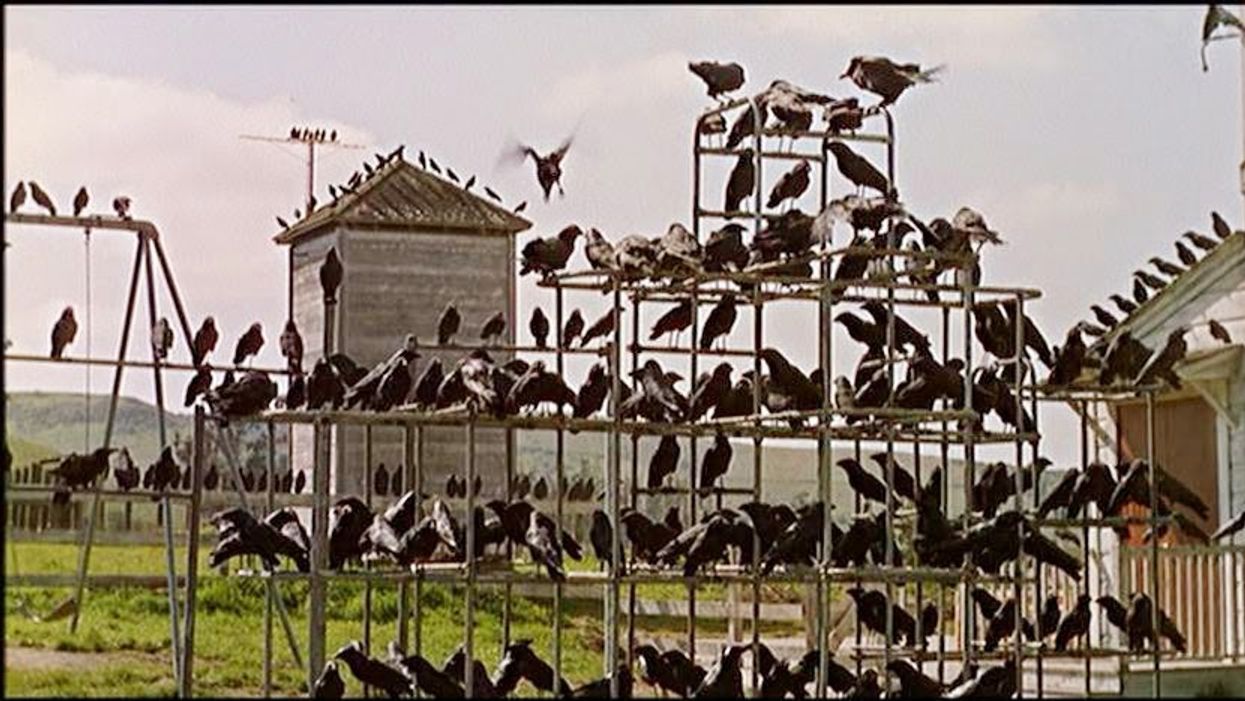Watch: The Reason Why Alfred Hitchcock Incorporated Birds Throughout His Movies
This essay looks at how Alfred Hitchcock deployed our fine feathered friends to such great effect in 'The Birds.'

As the below visual essay from Grace Lee points out, "Birds and cinema go way back, as far back as the very inception of the medium, with Etienne Jules Marey's early photographic series of birds in motion."
As a species, their most enduring portrayal in popular cinema belongs to, probably, Alfred Hitchcock's The Birds, and this essay looks at that film, as well as others, to try and tease out their symbolism and examine why they so often appear as harbingers of doom.
Hitchcock didn't only make use of birds in the film that bears their name, but also doves (in The Lady Vanishes) and seagulls (in Young and Innocent.)An interesting question asked here: what is it about birds that "endears them to the makers of horror films?"
According to Lee, perhaps it has something to do with the "unique space in our human world" occupied by birds, that is, a space that's "not exactly a part of it, but not entirely separate from it, either. They're wild, but they don't always feel wild."
And indeed, what makes the birds in Hitchcock so frightening is that there is no motive for their mayhem. The film has a very simple plot: a young woman from the city (Tippi Hedren) goes to visit the seaside town of Bodega Bay at the invitation of a young man (Rod Taylor). She meets his family, including his domineering mother and, well, attacking birds ensue. It's a tale of motiveless, avian mayhem.
There is, to be sure, an implied causal link between the arrival of Hedren's character and the attack of the birds, which, according to Xan Brooks, writing in The Guardian, hints to some that "the birds are a manifestation of sex, some galvanic hormonal storm that whisks sleepy Bodega Bay into a great communal lather."
Another Freudian reading comes from film writer Richard Allen, who has said that “the deeper significance of the birds' attack lies in an uncontrolled rage that issues from feelings of isolation and abandonment.”
As Lee points out, birds have historically been used as a signal of "danger, associated with death and witchcraft" and formed the basis of many superstitions (this is also reflected in the various names given to groups of birds, e.g., a murder of crows, an unkindness of ravens, a mischief of magpies.) And regardless of interpretations, perhaps the greatest strength of Hitchcock's film (and of Hitch as a filmmaker) is the way in which he was able to tap into subconscious fears and give them life, without ever explicitly psychologizing it.
Hitchcock was a master manipulator of emotions evoked from the depths of an audience's subconscious. In birds, Hitchcock found a subject that was both quotidian and deeply unsettling, and for him, this was always a salubrious intersection. Grace Lee's video is a fascinating look at the way birds have been portrayed on film (by Hitchcock and others) and should provide food for thought for any filmmaker, bird lover, or both.
Source: What's So Great About That?











